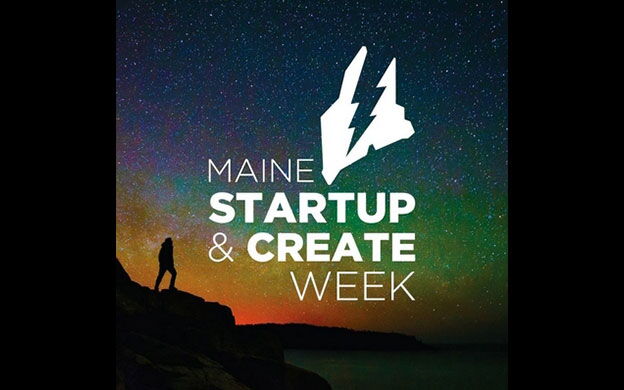Maine Startup & Create Week: Companies tell how they pivoted failures into successes
 Image / Courtesy of Maine Startup & Create Week
Image / Courtesy of Maine Startup & Create Week
When Chris Allen founded Brass Monkey in 2010, he thought his technology, which transforms smartphones into controllers for video games, was a winner.
But as it turned out, he says potential buyers didn’t understand its need and it was ahead of its time, so it failed. He subsequently changed his focus to live streaming, a business move known as a “pivot.”
“A pivot is staying alive,” Allen, whose company is based in Boston, said during the panel “Stories of Successful Pivots” at Maine Startup & Create Week Tuesday. “Trying to turn a really cool thing into a solution without really solving a problem isn’t the way to go.”
Allen and his wife already had another company, Infrared5, which had live streaming expertise. That company started by creating, maintaining and consulting for Red5, an open source streaming server. Allen repurposed technology from Brass Monkey to create a Red5 Pro second screen toolset.
And while the server originally was open source, he created proprietary tools and a licensing model to make more money.
“We’re moving from servicing to licensing with recurring revenue on a monthly basis,” he said. The company’s products are used to enhance interactive experiences.
Business pivots can involve strategy changes, product changes, even changes in management style or the business model.
Allen pointed to Uber and Airbnb as examples where bureaucracy was removed from a traditional business model of booking taxis and hotels and bringing the consumer closer to the service.
Different pivots
For Sam Mateosian, CEO of Yarn Corp., a social network for alternate reality based in Portland, the first big pivot came when his first company started hiring employees seven years ago. He had another pivot more recently, when he started his second company.
He cited Amy Poehler’s character in the TV show “Parks and Recreation” as an example of a successful pivot.
“They tried to make Amy Poehler unlikeable,” he said, an effort that didn’t go over well with her fans. “So they pivoted the show to make her likeable and successful.”
He defined a pivot as “a moment when you learn and listen to your audience.”
Mateosian remembers his first product, an interactive, simple product young people could use to tell a story. He tested it with students at the Maine College of Art, and found a striking division among the users. One group wanted to use the product to illustrate print stories, while the other group focused on making digital games.
“So what is an interactive story?” he asked. “Let’s call it a game. That was a pivot that came by listening to our intended audience.” He said user opinion weighs more heavily than that of advisors, investors and others.
Switching business models
Sometimes a pivot comes when you end up with a different customer than envisioned, noted Will Turnage, senior vice president of technology at R/GB, a New York-based marketing and advertising agency that focuses on products, services and communications to help grow clients grow in what it terms as the “connected age.”
One startup he worked with had developed a sensor for consumers, but soon noticed that the research and development departments of major companies were buying it. Those companies, however, didn’t like buying 40 devices for $100 each, so the startup changed its business model to accommodate their buying habits, moving to subscription pricing.
“A pivot is adapting to change, but not changing what makes you special and unique,” he said.
Such was the case with his work for Barnes & Noble’s Nook e-reader several years ago. “It was about how you go from a company about books to a company about reading,” he said. “Reading opens up possibilities for e-readers, quiet spaces to read and other things.” He said such a switch is necessary because so many things, like books, get commoditized and lose their value over time.
Moving on
Moving on from a product or service you’re heavily invested in, including with time, money and emotions, can be difficult, the panelists said. But it’s also part of being an entrepreneur.
“You can be in denial for a long time,” said Allen.
Added Turnage: “Sometimes the world just slaps you upside the head. It’s hard to break up with the product you’re in love with. It’s hard to move on sometimes.”
Turnage added that companies have to know when they fail, like one client that was six months away from launching a product when it discovered a Silicon Valley company had announced a similar product with a large funding campaign, so his client scrapped its product.
“I love that ‘Have you seen this?’ email,” Mateosian said.
“That’s 90% of the emails that I get from our investors,” Allen added.
Read more
Read all about it: Find stories about Maine Startup & Create Week right here #mscw2015










Comments